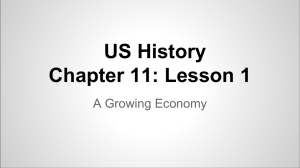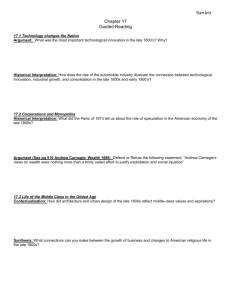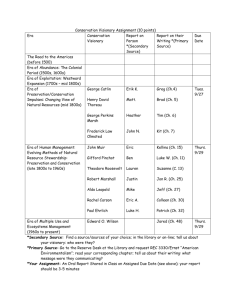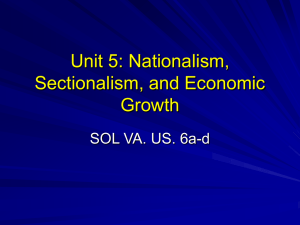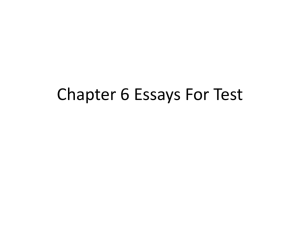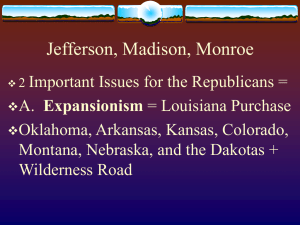Multiple Choice Questions
advertisement
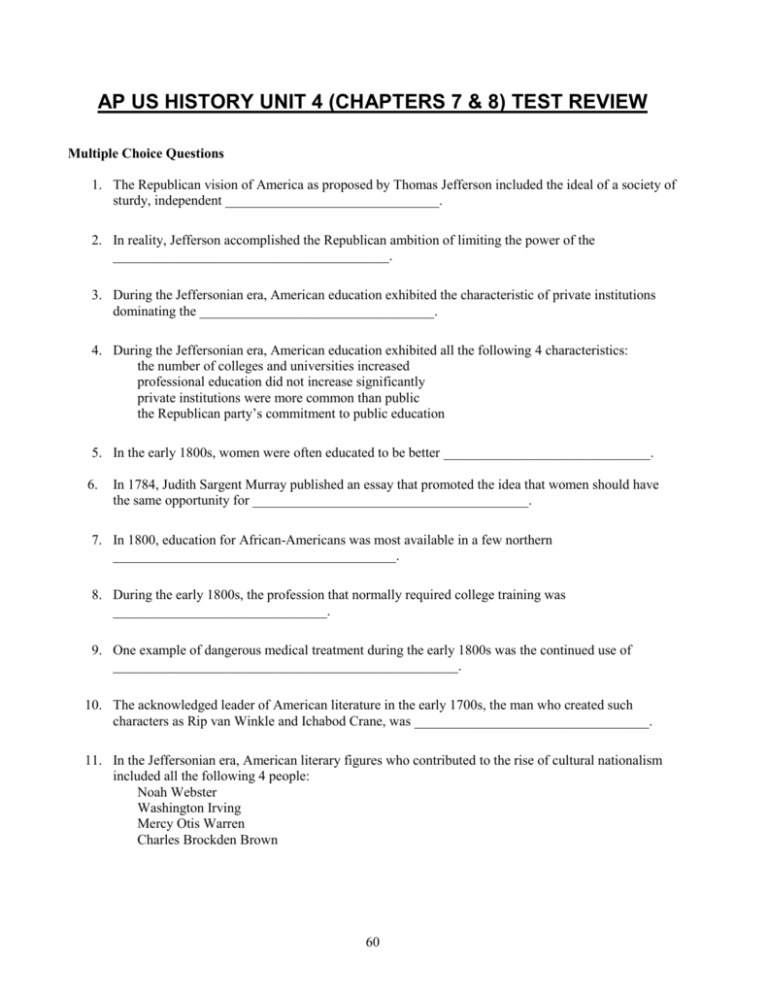
AP US HISTORY UNIT 4 (CHAPTERS 7 & 8) TEST REVIEW Multiple Choice Questions 1. The Republican vision of America as proposed by Thomas Jefferson included the ideal of a society of sturdy, independent _______________________________. 2. In reality, Jefferson accomplished the Republican ambition of limiting the power of the ________________________________________. 3. During the Jeffersonian era, American education exhibited the characteristic of private institutions dominating the __________________________________. 4. During the Jeffersonian era, American education exhibited all the following 4 characteristics: the number of colleges and universities increased professional education did not increase significantly private institutions were more common than public the Republican party’s commitment to public education 5. In the early 1800s, women were often educated to be better ______________________________. 6. In 1784, Judith Sargent Murray published an essay that promoted the idea that women should have the same opportunity for ________________________________________. 7. In 1800, education for African-Americans was most available in a few northern _________________________________________. 8. During the early 1800s, the profession that normally required college training was _______________________________. 9. One example of dangerous medical treatment during the early 1800s was the continued use of __________________________________________________. 10. The acknowledged leader of American literature in the early 1700s, the man who created such characters as Rip van Winkle and Ichabod Crane, was __________________________________. 11. In the Jeffersonian era, American literary figures who contributed to the rise of cultural nationalism included all the following 4 people: Noah Webster Washington Irving Mercy Otis Warren Charles Brockden Brown 60 12. Many early American literary figures glorified the virtues of American people and ________________________________________. 13. The intellectual products of the rational skepticism of the late 1700s included all the following 4 characteristics: the philosophy of deism the idea of universalism attacks on religious superstition the rejection of the idea of the Holy Trinity 14. The “rational theologies” of the early 1800s emphasized ________________________________. 15. Overall, the Second Great Awakening resulted in increased belief in salvation attained through ___________________________________________________. 16. The Second Great Awakening resulted in all of the following 4 developments: an increased membership in the churches embracing revivalism active participation by women who flocked to revivals in large numbers an acceleration of the growth of new Protestant sects the emergence of black preachers who became important leaders of the slave communities 17. In both England and the United States, the Industrial Revolution began in ___________________________________________. 18. All of the following were effects of the invention of the cotton gin: a strengthening of the textile industry in the South an increase in industrialism in the North a transformation of economic life in the South an increase in the export of cotton from the United States 19. The beginning of the American Industrial Revolution during the early 1800s resulted from all of the following 4 developments: technological advances imported from England the appearance of better transportation systems new inventions such as the cotton gin the development of advanced steam engines 20. The invention of the cotton gin led to the spread of cotton growing into ______________________________________________. 21. From 1800 to 1820, major changes in the United States transportation system included all the following: the development of a large merchant marine the invention and spread of steamboats the expansion of domestic shipping the building of turnpikes 61 22. In the early 1800s, most of the United States land area was occupied by ___________________________. 23. Jefferson sought to make his victory in the election of 1800 a “revolution” by reducing drastically the size and power of the ____________________________________. 24. During Jefferson’s administration, the city of Washington was best described as a raw provincial village whose population increased _____________________________________. 25. As an individual, President Thomas Jefferson displayed _____________________________________________. 26. The growing nationalism of the late 1810s and 1820s was reflected in all the following 4 developments: the foreign policy of the federal government the adherence by many people to a set of shared sentiments the growth of the economy the patriotic celebrations every Fourth of July 27. When the charter of the Bank of the United States expired in 1811, state banks issued bank notes that __________________________________________. 28. Between 1800 and 1820, the American textile industry experienced all of the following 4 developments: it expanded tremendously both before and after the war it saw the opening of the first American mill to combine spinning and weaving under one roof it suffered from the British dumping underpriced goods on the American market it experienced less foreign competition after the tariff of 1816 29. In 1807, the federal government appropriated money for the construction of a __________________________________________. 30. By 1820, the United States had seen significant progress in transportation in the form of significantly improved ________________________________________. 31. In 1817, when the federal government considered the bill to provide funding for internal improvements, ________________________________________________. 32. Following the War of 1812, westward expansion increased because the Indian opposition to white settlement _________________________________________. 33. Before 1825, the main routes west were the ______________________________________________________________________. 62 34. The greatest problem with the cotton economy of the Old South was the ______________________________________________. 35. The principal crop of the Southwest of the early 1800s was ________________________. 36. John Jacob Astor created a fortune in his ownership of the ___________________________________________________________. 37. Many trappers and mountain men lived peacefully and successfully with ________________________________________. 38. Major Stephen H. Long led an 1819 and 1820 expedition that labeled the Great Plains the “_____________________________________”. 39. The president who was the last of the Virginia Dynasty was _____________________________. 40. The “era of good feelings” became a popular label for the administration of ________________________________________________. 41. The period 1817 to 1821 became known as the “era of good feelings” because there was only one _________________________________________________. 42. In negotiating the Florida question, John Quincy Adams was able to obtain the cession of Florida when Jackson seized the Spanish forts at ___________________________________________. 43. Under the provisions of the Adams-Onis Treaty, Spain ceded all of ___________________________________________________________. 44. The Panic of 1819 was the result of a speculative boom in the economy that ran for a number of years before the panic. The causes of that speculation included all of the following: a land boom easy credit from the Bank of the United States increasing world prices for American farm products exceptionally high prices for American farmers 45. The controversy over whether Missouri would be admitted as a free state or a slave state illustrated _______________________________________________. 46. Under the Missouri Compromise, the entrance of Missouri as a state of the Union was paired with the admission of ____________________________. 47. Under the Missouri Compromise, slavery was prohibited in all the rest of the Louisiana Purchase north of the southern border _________________________________. 63 48. The John Marshall court was responsible for strengthening the interests of the propertied and ________________________________________. 49. Marshall’s decisions in Fletcher v. Peck and Dartmouth College v. Woodward dealt with the protection of contracts from violation by _________________________________________. 50. In the 1819 case of McCulloch v. Maryland, the Supreme Court decided that the doctrine of _______________________________________________. 64
